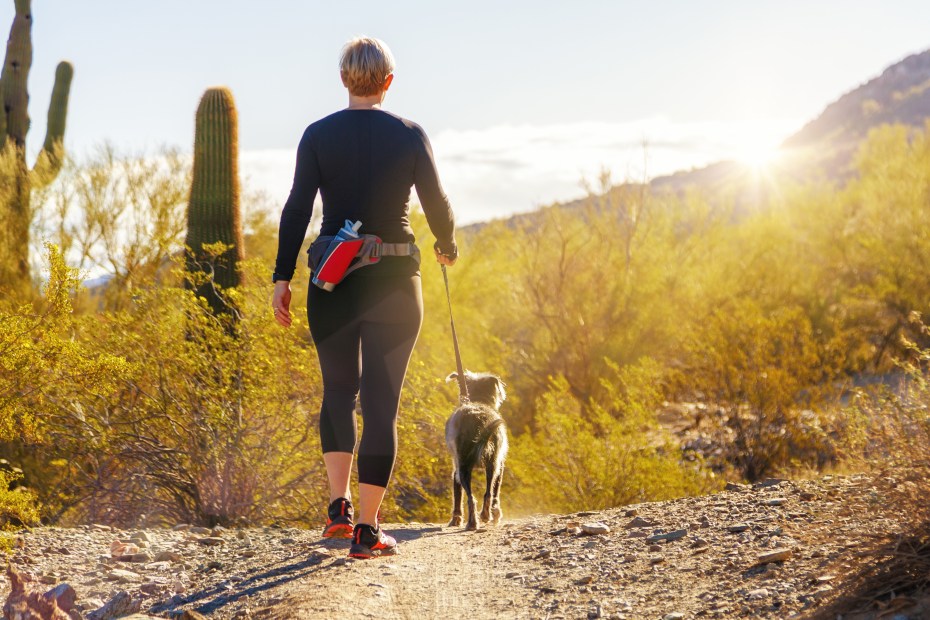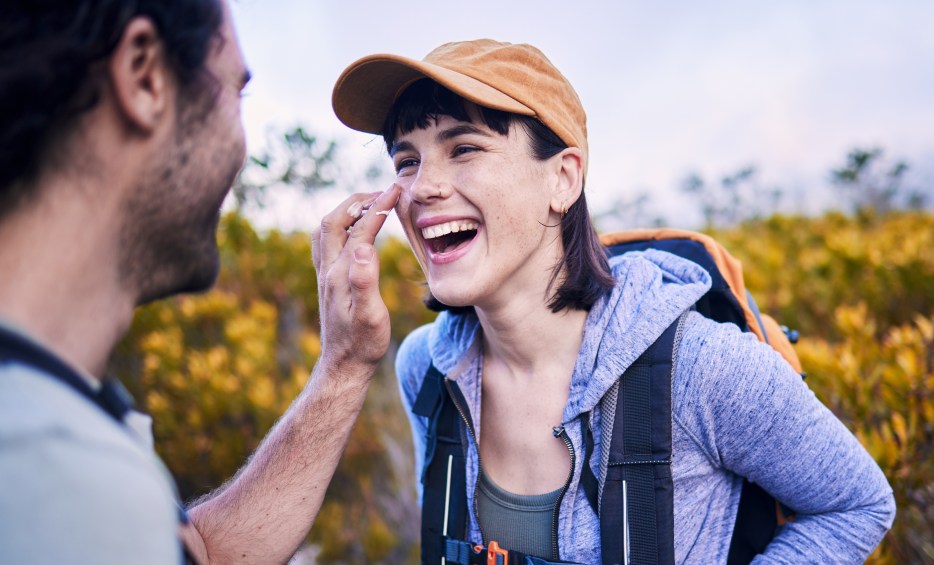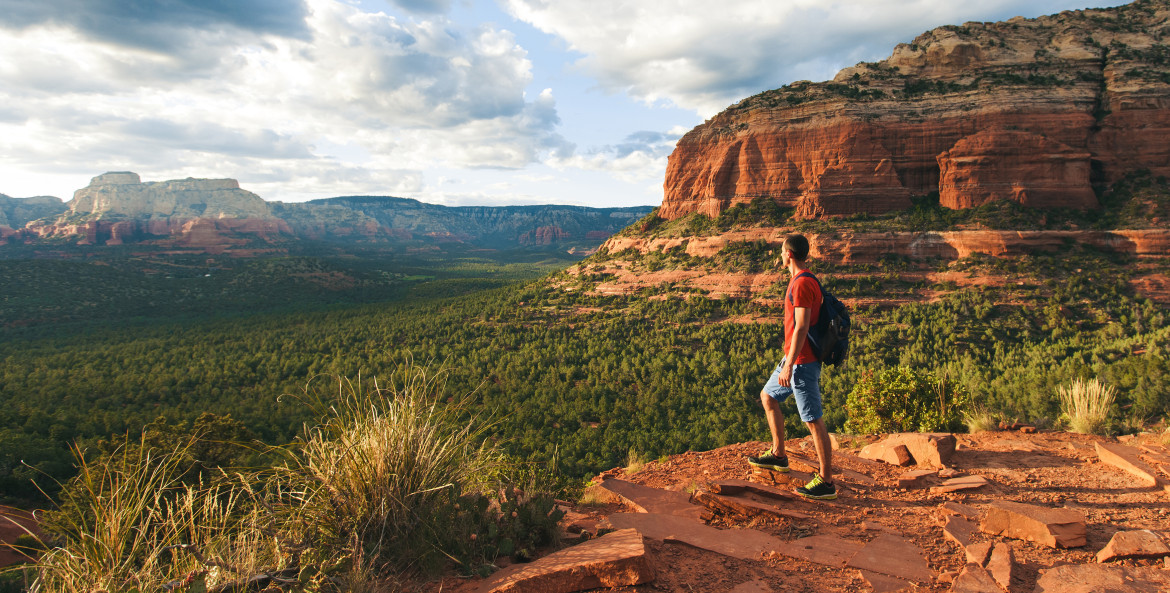Thanks to ample daylight and inviting temperatures, summer is prime hiking season across the West. But as the mercury rises, so do hazards for hikers. Last year in the national parks, extreme heat caused the most deaths since 2007, according to NPS data. As summer approaches, take into account these preventative measures to stay safe on the trail.
Hydrate adequately.
The hotter the temperature, the more you’re sweating and thus, the more you need to rehydrate. “Our bodies are pretty amazing at [knowing when we're] thirsty,” says Robin Larson, education director of wilderness medicine at the National Outdoor Leadership School (NOLS). “That’s a sign that you need to drink water.” Not drinking enough in the days before and the day of your hike can quickly lead to dehydration, causing dizziness, fatigue, weakness, and irritability. Thirst and either infrequent bathroom breaks or dark, smelly urine are a few indicators that you need more fluids.
Even if the hike is short, everyone should bring their own water. You can use Camelbak’s Hydration Calculator to get an idea of how much you should be drinking based on your gender, activity, environment, and other factors, but always follow your thirst. Then, during your hike, remember to take frequent water breaks.
While it may be tempting to drink a bunch of water before you set out, too much fluid can also be dangerous. Overhydration, or hyponatremia, dilutes your blood sodium and can cause your cells to swell, leading to bloating, headache, and fatigue. Prevention is the best antidote.

Look out for heat illnesses.
Heat exhaustion presents as fatigue, weakness, nausea, dizziness, and muscle cramps. Resting in the shade and drinking water can help you cool down. “If you don’t start to feel better, it’s probably a good idea to turn around,” Larson says.
If you push on, you are at risk of heat stroke, the most extreme heat-related illness that is a life-threatening emergency, she says. At this stage, the body can no longer control its temperature and can rise above 104 degrees F. Signs include a throbbing headache, confusion, combativeness, fainting, rapid and strong pulse, and even loss of consciousness, Larson says.
Pay attention to yourself and your hiking buddies, and prioritize health over finishing the hike.
Monitor the weather and air quality.
Summer weather often brings more than high temperatures. During the season of sunshine, the West is also prone to lightning and thunderstorms, monsoons, and flash flooding. Shifts in the weather can happen quickly, so it’s smart to research the area ahead of time to be aware of these hazards. Then, monitor weather advisories to pack and plan accordingly.
Air quality is another consideration to keep an eye on, especially as wildfires become more prevalent across the West. Whether a fire is burning close by or in another state, the fine particles of wildfire smoke can damage your lungs. Check air quality forecasts and current readings at sites like AirNow.gov and PurpleAir.com before heading out. Experts recommend avoiding outdoor activities if you are sensitive to particle pollution when the air quality index (AQI) is over 101 (orange). Everyone else should reschedule their outdoor adventure when the AQI is over 151 (red)

Protect your skin.
The best way to limit your exposure to UV rays is by staying in the shade and avoiding the peak hours of 10 am to 4 p.m. But if staying in the shade isn’t an option along your hiking route, avoid getting a sunburn by wearing clothing made from UPF fabric, a wide-brimmed hat, and sunglasses. Apply at least SPF 30 sunscreen to all exposed skin, and set a timer to remind you to reapply at least every two hours.
If it’s tempting to skip these steps, remember that only a short time of exposure to UV radiation, even when there’s cloud cover, can leave you with a painful sunburn. And repeated time in the sun without protection can damage skin and cause skin cancer.
Time your hike.
Ideally, you don’t want to be on the trail during the hottest part of the day, which can vary depending on your location, although it’s usually in the afternoon. Early in the morning or early in the evening can offer shade and more pleasant temperatures, which aligns with avoiding the strongest UV rays between 10 a.m. and 4 p.m., per the American Cancer Society.

Pack smart.
Larson and the American Hiking Society recommend bringing along the following necessities in a daypack. Some of the items you’ll definitely use, while other items are in there just in case you get lost or off track, the weather forecast is wrong and inclement weather rolls in, or something unexpected happens.
- Sunscreen
- Sun layers and rain gear
- Appropriate footwear
- Extra water and a way to purify more
- Snacks and extra snacks
- Communication device (cell phone, personal locator beacon, or satellite communicator)
- First aid kit
- Knife or multi tool
- Headlamp or portable light
- Map and/or GPS
Have an emergency plan.
The outdoors can be unpredictable, so you want to have a plan in case something goes awry. Larson recommends hiking with a buddy if possible and says to always tell someone reliable where you’re going and when you’ll be back. That way, they can call for help if you can’t.
Other details to mention include your general route, how long you’ll be out, and when they should expect you to check back in. When you’re leaving directions for someone, tell them who to call if you don’t show up, whether that’s 911 or a number for local search and rescue.
